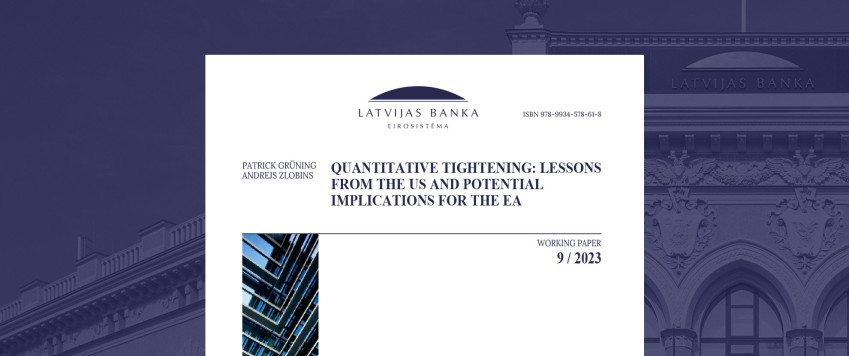Quantitative Tightening: Lessons from the US and Potential Implications for the EA
Working paper 9/2023

Given the decades-high inflation, central banks are complementing conventional rate hikes with quantitative tightening (QT), i.e. a reduction of the sizeable asset hold- ings accumulated during the quantitative easing (QE) era. In this study, we employ empirical (proxy-SVAR) and structural (medium-scale NK DSGE) frameworks to study the macroeconomic implications of QT. Our empirical findings show that the impact of QT has been relatively muted in the US, suggesting asymmetric effects of QT compared to QE. This finding is corroborated by model simulations, calibrated to the post-pandemic high inflation environment. Nevertheless, QT can partly sub- stitute conventional rate hikes by creating some deflationary pressure and requiring less aggressive conventional policy action. QT produces smaller effects in the euro area (EA) due to the smaller share of private bonds on the ECB’s balance sheet. However, a potential concern for QT in the EA is the proliferation of fragmentation risk. We empirically argue that the deployment of market-stabilisation QE can be used to stabilise sovereign spreads without creating considerable inflationary pres- sure in case QT leads to disorderly market dynamics.
Keywords: monetary policy, quantitative tightening, quantitative easing, proxy- SVAR, DSGE
JEL codes: C54, E31, E52, E58, G12
Textual error
«… …»



